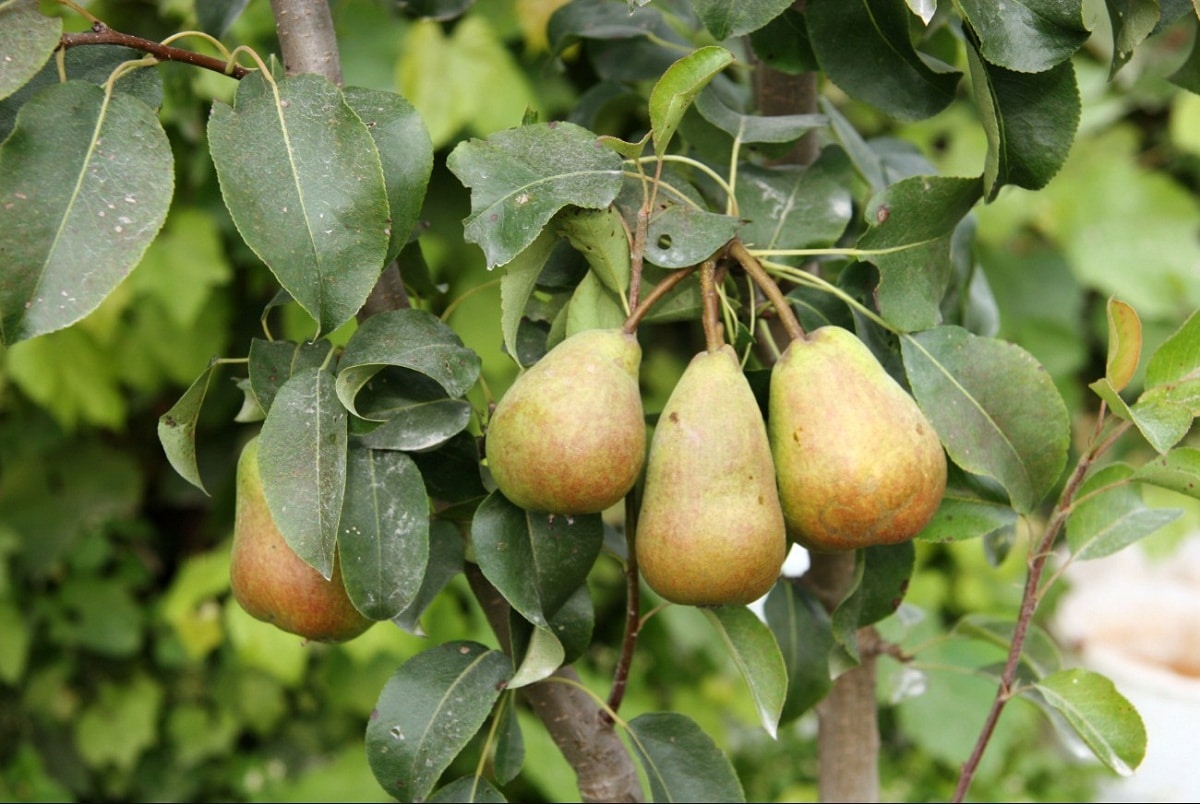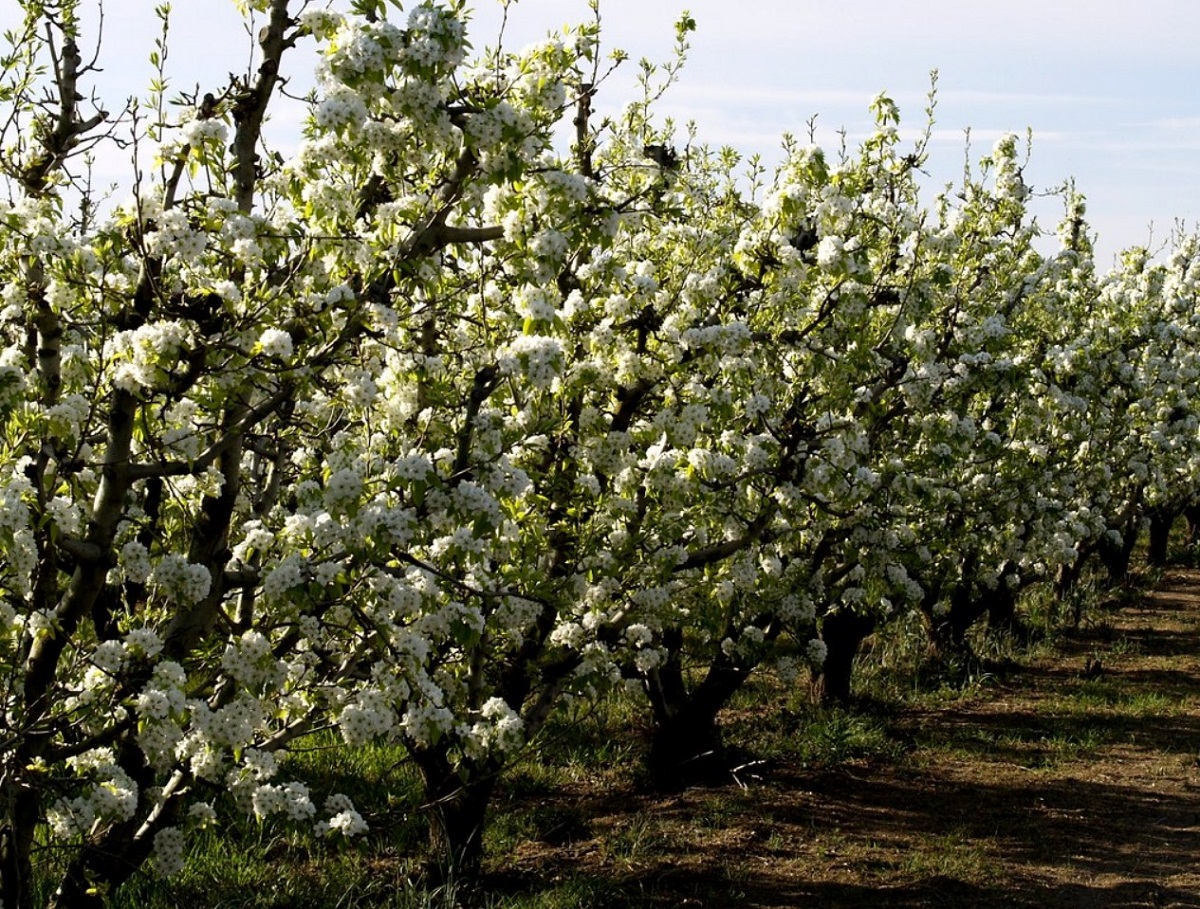
Maybe like many people around the world, you have always wanted to have a plant in your garden (if there is enough space) that is fruitful. The good news is that in the case of pear trees, it is possible that with a little space, it can be had in a garden. Of course, not everything is about wanting, going to buy the species, planting and that's it.
The ercolina pear requires maintenance, care and knowing the plant, in order to know how to deal with possible problems and make it bloom without any problem, being able to produce pears in due course.
General data of the pear ercolina

The first thing to highlight about the ercolina pear and make it very clear to you, is that this species comes from the European common pear or as it is also known, pyrus communis by its scientific name.
So talking about either species would be the same. In this sense, the ercolina is native to Italy and much of the Tuscany region. But at the European level, it is a plant which has been cultivated for more than 2000 years.
And although it is native to Europe, it can also be found in much of Western Asia. Inclusive, Greeks and Romans discovered this plant and they also began their cultivation becoming part of their culture.
Sadly it is not a plant that anyone can have, as requires a specific temperature in order to develop. That is, in order to cultivate ercolina pear, you need an environment, which is below 7.5 ° C and around 1000 hours of constant cold.
But also has the ability to grow in temperate climates, but it necessarily needs cold and wet winters. Also, the most common is that it is grown in places that are above 1000 meters above sea level, which makes it more difficult to have in a garden.
It should be noted that the place where you are does not have to have summers with too much sun and the temperature should not be too hot. Something curious is that those frosts that take time to arrive end up affecting the harvest, if ercolina pear is being harvested. An interesting fact is that among all the pear species that can be in an orchard, farm or plot, the first to flower is the ercolina pear.
Features

This It is a tree which has the capacity to grow to a maximum height of 20 meters. It has the ability to live for more than 65 years if it is given proper care and maintenance. Although the environment, land and other factors also influence the number of years it can live.
As for the trunk, it is very high, quite thick and the bark of the plant is of a cracked texture with a gray color. As far as the branches are concerned, they grow in such a way that they have an angle of inclination of 45 ° with respect to the trunk. It should be noted that the bark is smooth despite being cracked. curiously this one has a green appearance in its beginnings, but as it grows, it turns from green to purplish-gray.
Roots
The good thing is that it is one of those plants that once they have reached their adult stage, have managed to fix themselves to the ground with a firmness that other plants cannot achieve. So the full development of this manages to be fixed to the ground quite firmly and can withstand a whole drought if necessary.
Leaves
They have an oval shape, while at the same time giving the sensation of being jagged but in a very subtle way. Although it is not always the case, since there are leaves that are completely whole.
Flowers
As for the flowers of the pear trees, It should be noted that the flowers of this species stand out among the rest of the varieties, since it has a large percentage of self-sterility.
Cultivation and care
Assuming the case that you have the space to have this plant, you have to know some general information in order to make it grow healthy and strong. And although we make it clear that it needs a certain height, as well as a specific climate to grow, it is possible grow pears of this species in areas where the climate is temperate and there is some humidity.
The fact is that it is possible to have it in these places, but do not forget that this species is more resistant to cold than heat. That is why it is not advisable to have this fruit tree in temperate places, since it is highly probable that during the development of its fruits, these do not grow or dry out before reaching maturity.
Although this is something that happens a lot if the summer is too extreme, so if you live in a place where the temperature does not rise above 19 ° C, it is you may have some pears to eat.
But if what you want is to make the plant bloom and then give way to the development of its fruits, you know that you have to have the plant in a place whose temperature is between 7 and 7.5 ° C.
Regarding soil nutrients, the species is very demanding in this regard. The only way the plant can thrive, grow and be cultivated is to have a soil or soil with silty characteristics.

Although it is recommended that there is also silicon-based earth and that it be clayey. In addition to this, it should be noted that the earth has to be completely healthy and permeable.
Do you remember one of the characteristics where we specify that the plant anchors very well to the ground? Based on this you have to know that you need a space that is quite deep and there is no kind of pipe nearby.
In the same way, the land or soil where you will plant this pear tree does not have to have too much moisture, let alone be completely dry. The reason for this is because too much constant humidity is detrimental to the plant.
As additional information in case you are concerned about giving the best soil and soil possible to the ercolina pear, is that the pH must be between 6.5 and 7.5. Likewise, it must have active lime that is less than 7% and there must be no trace of salinity.